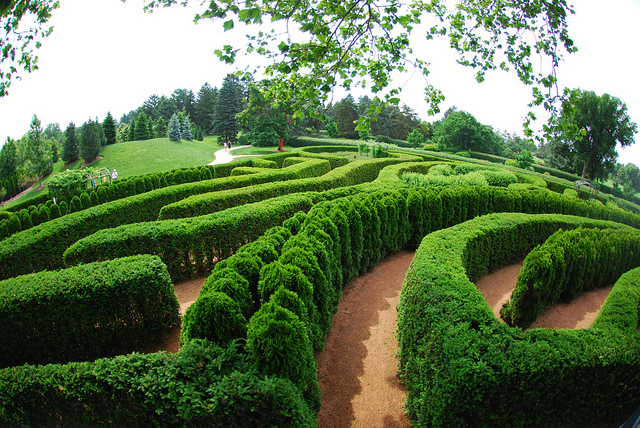
One type of work I do with organizations on their road to more collaborative and social relationship-oriented cultures is to surface their organizing principles. These are the core beliefs, assumptions, and values that guides their behaviors and decisions. These are the bedrock rules that keep them on course.
While a few organizations have thought about their principles before we begin this work together, most have never considered what’s behind or underneath their policies and practices. To help guide them beyond their current thinking, I take them (at least for a few minutes), outside their walls to the natural world to some of the organizing principles of the most enduring ecosystems: earth.
From A Simpler Way (Wheatley and Kellner-Rogers), consider how some of these principles might change the way you think about your organization or the work you are focused on each day.
Everything is in a constant process of discovery and creating. Everything is changing all the time: individuals, systems, environments, the rules, the processes of evolutions. Even change changes. Every organism reinterprets the rules, creates exceptions for itself, creates new rules.
Life uses messes to get well-ordered solutions. Life doesn’t seem to share our desires for efficiency or neatness. It uses redundancy, fuzziness, dense webs of relationships, unending trials and errors to find what works.
Life is intent on finding what works, not what’s “right.” It is the ability to keep finding solutions that is important; any one solution is temporary. There are no permanently right answers. The capacity to keep changing, to find what works now, is what keeps any organism alive.
Life creates more possibilities as it engages with opportunities. There are no “windows of opportunity,” narrow openings in the fabric of space-time that soon disappear forever. Possibilities beget more possibilities; they are infinite.
Life is attracted to order. It experiments until it discovers how to form a system that can support diverse members. Individuals search out a wide range of possible relationships to discover whether they can organize into life-sustaining system. These explorations continue until a system is discovered. The system then provides stability for its members, so that individuals are less buffeted by change.
Life organizes around identity. Every living thing acts to develop and preserve itself. Identity is the filter that every organism or system uses to make sense of the world. New information, new relationships, changing environments–all are interpreted through a sense of self. This tendency toward self-creation is so strong that it creates a seeming paradox. An organism will change to maintain its identity.
Everything participates in the creation and evolution of its neighbors. There are no unaffected outsiders. No one system dictates conditions to another. All participate together in creating the conditions of their interdependence.
Nature encourages wild self-expression as long as it doesn’t threaten the survival of the organism. The world supports incredible levels of diversity, playful additions to one’s physical appearance, unique excursions into color and flair. There is no ideal design for anything, just interesting combinations that arise as a living thing explores its space and possibilities.
The question becomes, then, where to begin.
[photo credit: maze, clarkmaxwell]